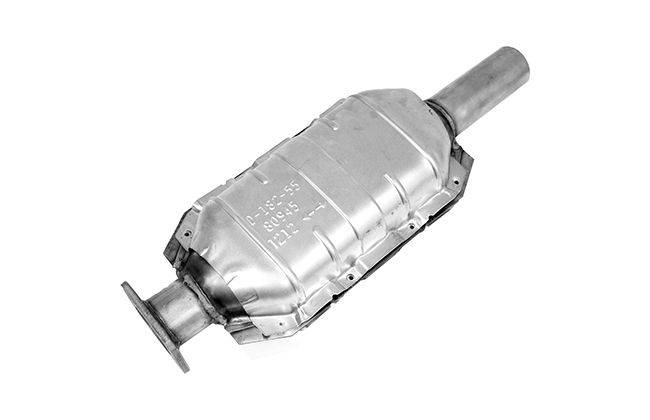Technical Aspects: Catalytic Converter

Catalytic converter converts the pollutant gases present in the engine exhaust into non pollutant gases through chemical reaction. Exhaust from engine is made to pass through a catalytic converter. It works efficiently between 650 and 800 degree Celsius. If the temperature is beyond 1000 degree Celsius, the catalytic converter will melt.
Background/Development:
- First catalytic converter concept was put forward by Eugene Houdry.
- In 1980, first three-way catalytic converter was developed by American company Engelhard.
Technical facts:
In catalytic converter, exhaust is made to pass through a catalyst. A catalyst is a material that promotes a chemical reaction without being affected by the reaction. Other technical insights are discussed below:
1. Inside the catalyst converter, there is a honeycomb catalyst body comprising of honeycomb carrier body with a layer of catalyst over surface. The internal honeycomb structure of is usually made of ceramic or a metal foil.
2. The hot exhaust gases flow through the internal channels provided and react with the catalyst, several pollutants in the exhaust are converted into harmless substances.

3. The catalyst promotes the oxidation of CO and hydrocarbons and the reduction of nitrogen oxides (NOX). After the pollutants get converted into harmless substances, the exhaust gases is directed to the muffler.
Types of catalytic converter:
1. Oxidation/2-way catalytic converter: This converter involves oxidation of carbon monoxide and hydrocarbons using platinum and palladium as the catalyst. There is sufficient amount of oxygen in diesel exhaust, hence diesel engines are mostly installed with oxidation converter in combination with EGR (Exhaust Gas Recirculation) which helps in reducing NOX concentration.
Oxidation of carbon monoxide to carbon dioxide:
2CO + O2 → CO2
Oxidation of hydrocarbons into carbon dioxide and water:
CxHy + O2 → CO2 + H2O

2. Reduction catalytic converter: This converter involves reduction of nitrogen oxides into elemental nitrogen and oxygen using platinum and rhodium as the catalyst.This type of converter is never deployed alone with any engine since it can't deal with CO HC.
2NOX → N2 + xO2
3. Three way catalytic converter: This converter is most effective for gasoline engines. It involves both reduction and oxidation catalytic body fitted one behind the other. Exhaust gases first passes through reduction catalyst and then over oxidation catalyst. In this way, it converts all three pollutants CO, HC and NOx into non poisonous ones simultaneously.

This converter is used in combination with oxygen sensors which relays the information to Control Unit regarding amount of oxygen present in exhaust. This data controls the air-fuel ratio admitted into engine to keep emissions at minimum. In this way, it plays a role in maximizing the conversion of pollutants into harmless products.
4. Three way plus / Dual-bed catalytic converter: It is a further improvement to the 3 way catalytic converter. It involves both reduction and oxidation catalytic body. But there is an extra oxidation bed/oxidation catalyst body at the end to increase oxidation capability. This allows further cleaning of exhaust gases. In order to increase oxygen content for further oxidation in extra bed, air is injected in between the two sections. This converter has maximum efficiency as compared to other variants.
Watch this video for better understanding of Catalytic Converter:
Also Read: Technology Decoded: Power Brake
